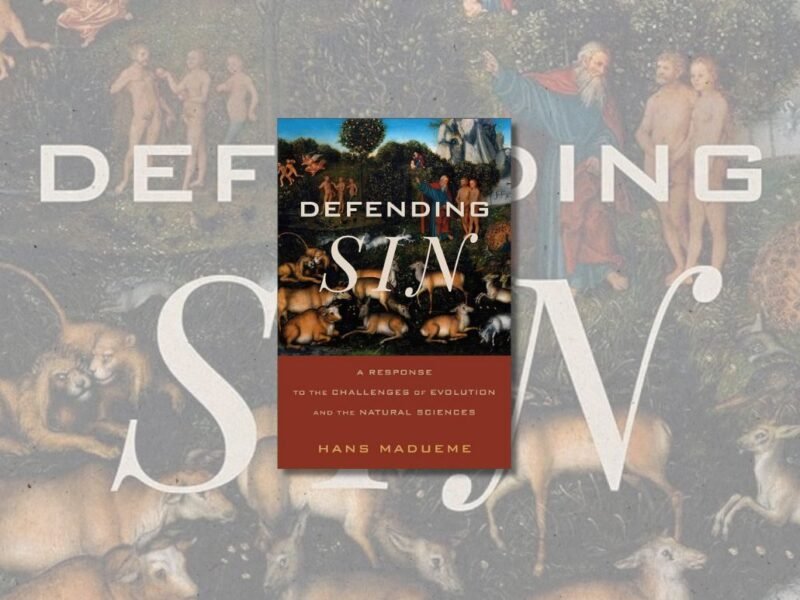Take This Cup: How God Transforms Suffering into Glory and Joy. By Charles Erlandson. Eugene, OR: Wipf & Stock, 2020. 216 pp. $46 (cloth); $26 (paper).
Fr. Charles Erlandson’s Take This Cup takes upon itself the daunting task of answering how God uses suffering for our joy and his glory. Fr. Erlandson divides his work in a few different ways, but the broadest outline is that humanity sinned but refused to drink the cup of wrath that we deserved, Christ did not sin but drank the cup for us in order to unite us to himself, and now we are beckoned to take the cup with Christ and find ourselves caught up with him in glory, even in the midst of our suffering. Throughout the text Fr. Erlandson unpacks these ideas, consistently showing us how the Son condescended to suffer for us that our suffering might be the means by which we are made perfect in him. Playing on the words of St. Irenaeus of Lyons (Ad. Haer. 4.20.7), Fr. Erlandson sums up his work well: “The glory of God is to empty himself and share himself with man, even the glorious work of redemption, which is purely God’s. The glory of man, a lesser but participatory glory, is to receive this gift of the life and work of Jesus and give it back to God by partaking of redemption through suffering” (171).
St. Hilary of Poitiers argues that when Christ is asking the Father to let the cup pass from him in the Garden of Gethsemane, he is not rejecting the cup of suffering, but desiring that the cup would be passed on to his disciples as well (Commentary on Matthew, 31.7). While this is not a sufficient account of Christ’s request (John 12:27 certainly portrays Christ as taking the cup quite willingly, but we must also remember that Christ, naturally, did not desire to die according to Mark 14:35), it does harmonize well with Jesus’ insistence that those who receive his baptism will also receive his cup (Mark 10:38‒39). Surely, Jesus did not desire to suffer alone. He did not desire to be abandoned by his friends who slept instead of prayed, he did not desire to be rejected by the people who a week prior lauded him as king, he did not desire for the rulers of the people he ruled to accuse him as an usurper of power, he did not desire to be scourged, beaten, and crucified. Hence his cry of dereliction: “My God, my God, why have you forsaken me?” Christ indeed was forsaken by his friends, his people, his religious leadership, and abandoned to his enemies, and yet, it is because of his death, descent, resurrection, and ascension that he is able to “tell of your name to my brothers” (Ps 22:22). The loneliness and abandonment that Christ suffers for us is precisely what he uses to unite us to himself.
The gospel of suffering, as Fr. Erlandson calls it, is essential for every Christian to grasp intellectually, cling to experientially, and own in the wake of their own suffering. I would even argue that until one has received the gospel of suffering as one’s own story and indeed good news, one cannot fully appreciate just what it is that one has been called to in Christ. Christ does not suffer in order that we may never suffer, but rather he suffers in order to hallow our suffering and to join it to his own work in reconciling the world to the Father. It is our reception of suffering as gift and our sharing of the comfort we have received from God with those who suffer like us (2 Cor 1:3‒6) that enables us to live out the gospel. Just as Christ was not crucified in a corner (Acts 26:26), so also our suffering is meant to be shared with others in order to draw them to the God who bleeds.
Pastoral Concerns: Hard Truths Require Vulnerability
While I heartily endorse the vast majority of this book, I must pause to say that this book would perhaps be best used in a group setting where individuals could process their own suffering with someone who has processed and is learning how to receive their own suffering for the sake of God and his glory. Fr. Erlandson does a wonderful job of surveying much of the biblical material around how God uses suffering for his glory and our joy, but he does so in a way that speaks from a distance. Rather than share how God has used suffering in his own life, Fr. Erlandson asserts that God uses suffering for our good.
While I do not know any details of his life, I have no doubt that Fr. Erlandson has suffered and learned how to receive this suffering as gift. I only know this, however, because of my own journey through the valley of the shadow of death. It is only once one has crossed through that treacherous, haunted path with Christ leading the way that one can receive suffering not just as consequence for sin, but as the means by which we are conformed to the image of Christ. How is it that Fr. Erlandson has suffered and found Christ to be his joy and glory despite the pain? How is it that he has found himself further conformed to the image of Christ through suffering? How has God used the megaphone of suffering to speak hard truths into his life? These experiences remain a mystery, which weakens the rhetorical efficacy of some of the more difficult claims of the book.
The first difficult claim is that “suffering is a sign that we are united to Jesus Christ” (77). I do not dispute the validity of this claim, but it is not difficult to imagine sufferings that do not obviously substantiate this claim. Should one suffer persecution for their faith in Jesus, the claim would be joyfully received. Should someone suffer the loss of a loved one to an illness, survive physical or emotional abuse, or survive a horrific natural disaster, one might be harder pressed to call such suffering a sign that one is united to Jesus. To be fair, Fr. Erlandson is clear that “suffering is not inherently redemptive but is instead inherently evil and destructive. But suffering is both redeemable and a means of redemption…” (31). This qualifier is an important pastoral note, but I believe such claims are better substantiated by testimony of the same.
The second difficult claim is from an implication Fr. Erlandson sees in the text of 1 Pet 4:12‒19. This passage follows up on Peter’s encouragement to Christians who are suffering persecution. He warns them to follow Christ’s example, who was totally without sin, and yet suffered, “the just for the unjust” (1 Pet 3:18), for the sake of the world. Peter goes on to say that those who suffer trials should rejoice when they suffer as a Christian. Fr. Erlandson then asks, “Is it not possible that every kind of insult we bear – if we accept it for Christ’s sake – falls under this promise of blessing? Must we wait for explicit persecution to receive a share in Christ’s suffering and, therefore, his glory and joy? … any suffering that we receive as the suffering of Christ is something that will bring God glory” (90). Fr. Erlandson does go on to clarify that he does not include suffering that is “the result of our own sinfulness” and specifies that we must offer this up to the Lord, but these claims are built on alleged implications from a text that very clearly limits our partaking of Christ’s sufferings to suffering for the sake of Christ. Is there a sense in which other kind of suffering might be a participation in Christ’s sufferings? Here again, when the argument is built on an implication from a text, personal testimony of how one has experienced union with the wounded healer through suffering would have helped substantiate such claims.
The third difficult claim, based on Colossians 1:24, is that our suffering is the means by which Christ’s work is completed in us. Again, I have absolutely no dispute with this claim, but I think many will struggle with this teaching theologically and practically. Fr. Erlandson aptly articulates this truth: “Christ’s work is sufficient, but it is not yet complete, for if it were so, all suffering, sin, and death would have already passed away. Christ’s work is sufficient, but something is lacking or missing because he is still in the process of conquering all of his enemies” (80‒81). Perhaps more to the point, he is still in the process of killing the old man in us, not because he is unable, but because he is inviting us to be willing sacrifices (see Part IV, Chapter 4). Indeed, St. Paul enjoins us to “work out your own salvation with fear and trembling, for it is God who works in you, both to will and to work for his good pleasure” (Phil 2:12‒13) directly in response to the kenotic hymn to Christ. As Christ suffered, so also we suffer, working that which God would create in us through his strength and grace and not our own efforts. Still, some struggle with the idea of our suffering in some sense “filling up what is lacking in Christ’s afflictions” (Col 1:24).
This is, indeed, a difficult text to understand. Here the theological difficulty is perhaps outweighed, however, by this sentence just a breath before: “Jesus has constructed for each of us exactly the size and shape of cross he desires for us to have” (80). Seen on the other side of victory, from the vantage point of the resurrection, such language is perhaps permissible, but for those in the midst of suffering this language may seem cruel and even paint God as capricious or vindictive. The notion of Jesus constructing crosses for his people is a far cry from his call to take up one’s own cross. Here the murky debates over God’s sovereignty and free will may flood the theologian’s mind, but remember, this is a book about suffering ostensibly written for those who are suffering. To call someone’s dead loved one, someone’s physical abuse, someone’s chronic illness a cross crafted by the carpenter of Nazareth is simply too destructive an image, no matter what truth might be communicated.
That our suffering is a sign of our union with Christ, that all suffering may be a means by which we are conformed to and share in Christ and his sufferings, that God uses our suffering to fill up that which is lacking in Christ’s suffering, I heartily affirm. However, such claims must be substantiated, not only with the text of Scripture (a task Fr. Erlandson ably accomplishes), but with the personal testimony of how God has done this. If we want people to receive these kinds of truths, truths that shift paradigms, break mental models, shatter expectations, and demand full and complete faith in God, then we must, like Jesus, shepherd them to these truths. Trusting that God is working in the midst of suffering is not something one accomplishes through mere intellectual ascent. Rather, it is a painstaking process that requires the support of the Body of Christ. Those who are suffering or who are processing the suffering they experienced need shepherds to lead them, they need people who are willing to use their own scars as bridges to broken hearts. This kind of delicate work requires incredible vulnerability, both for the speaker and the hearer, without which the gospel of suffering may seem specious.
Theological Concerns: No Analogy is the Best Analogy
There are several passages of the text that contain theological claims that I hope Fr. Erlandson would revise. For example, Christ did not assume “fallen human nature that he might redeem it” (17), but took to himself a human nature free from any stain of sin original or actual, perfectly oriented towards God in body and soul, in order to redeem fallen humanity.
There are also numerous Trinitarian analogies made that I suspect are better left unsaid than speculated. For example, it is not true that “bread and wine represent the unity in multiplicity that is the nature of the triune God” (65), but rather God is simple in his being, without body, parts, or passions.
Later Fr. Erlandson asks, “Is it not possible that the binding together into one that occurs through suffering is a better picture of the life of the Trinity than picking shamrocks or contemplating the incredible edible egg? … The Father gives himself up for the good of the Son and the Spirit, the Son gives himself up for the good of the Father and the Spirit, and the Spirit gives himself up for the good of the Father and Son” (119‒120). Potential influences from Hans Urs von Balthasar (see Theo-Drama V, 123 for one such example) and Origen (Comm. Matt. 13.18) aside, it seems unwise to attempt any picture of the invisible Trinity at all. Aside from the obvious issues of analogies inevitably leading to error (partialism, modalism, subordinationism, etc.), images also inherently run the risk of conflating the economic activity of the Trinity with the immanent life of the Trinity, a risk that seems to be the foundation of these thoughts: “The most tangible revelation of the Trinity is the Father-Son relationship, in which the Son gives himself up to do the will of the Father… a kind of suffering (sacrificial self-giving or love) may, in fact, be at the heart of the Holy Trinity” (120). The Son of God is, of course, imaging to us who God is through his life and teaching (Col 1:15), but he is also showing us what humanity is supposed to look like. When we conflate or confuse these revelations (as Pannenberg is wont to do; see Systematic Theology I, 330‒331) we run the risk of confusing or mixing the natures of Christ. He came as Son of Man and Son of God, and as St. Augustine teaches us, we must always be asking which he is revealing to us, the form of God or the form of the slave (Tract. Ev. Jo. 19.15)?
Recommended with a Shepherd and Prayer
We need more books like this. Take This Cup provides a thorough, biblical, and holistic accounting of the good news of Jesus. There is a sense in which Christ has come to save us, not just from sin, death, and the devil, but from suffering through suffering. While I struggle to heartily recommend it for those who are deeply suffering because of my concerns listed above, I did enjoy reading the text and found myself gladly agreeing with his account of how God uses our suffering for his glory and our joy. Read with a fellow sheep traveling through the valley of the shadow of death who has found healing in Jesus, however, I could see this text being a capable means to explore how God uses suffering for our good.
We need more accountings of theodicy like this, that invite the reader not just to consider intellectual truths, but to turn to Christ in worship and find fulfillment. One of the things I loved about the book was that each chapter consistently ended with a prayer, hymn, poem, or some other meditation to stir one’s soul towards the Lord. All theology must terminate in doxology, and Fr. Erlandson faithfully guides his reader to just such an end. Christ is indeed “the beginning and the end, the Alpha and Omega of human existence” (97).
There are aspects of this text that make it difficult for some Christian traditions. The high view of the Sacraments, the high view of the Church, the weight of the topic itself, all may repel some. This is not a weakness of the text, however. What this shows is the deep level of integration that Fr. Erlandson has recognized in the gospel of suffering. It is perhaps akin to realizing that there has been music playing in the background the whole time, but one is just now noticing it. Holy Baptism, the Eucharist, sacramental ecclesiology, and suffering all point us to the sufferings of Christ and all invite us to join him in his suffering for our own sanctification and for the drawing of all men to Christ. Our understanding and reception of this gospel is increased and extended through our proper understanding and participation in these gifts of God for the people of God.
I have minor qualms and genuine concerns about this book, and yet, at its best it does present a compelling articulation of the gospel of suffering. Ultimately God does use our suffering, if we bring it to him for hallowing, not only for our healing, but also that we might participate in his work for the sake of the world. As Fr. Erlandson writes, “When we are joined to Jesus by our baptism, faith, and suffering, his life becomes our life, and his compassion becomes our compassion. His perpetual sacrifice of himself to the Father, manifested in his perpetually serving others and giving himself to them for their good, becomes our sacrifice and oblation, which he now offers to the Father through us” (128). To this I say, “Amen.”






'Book Review: “Take This Cup”' has no comments
Be the first to comment this post!